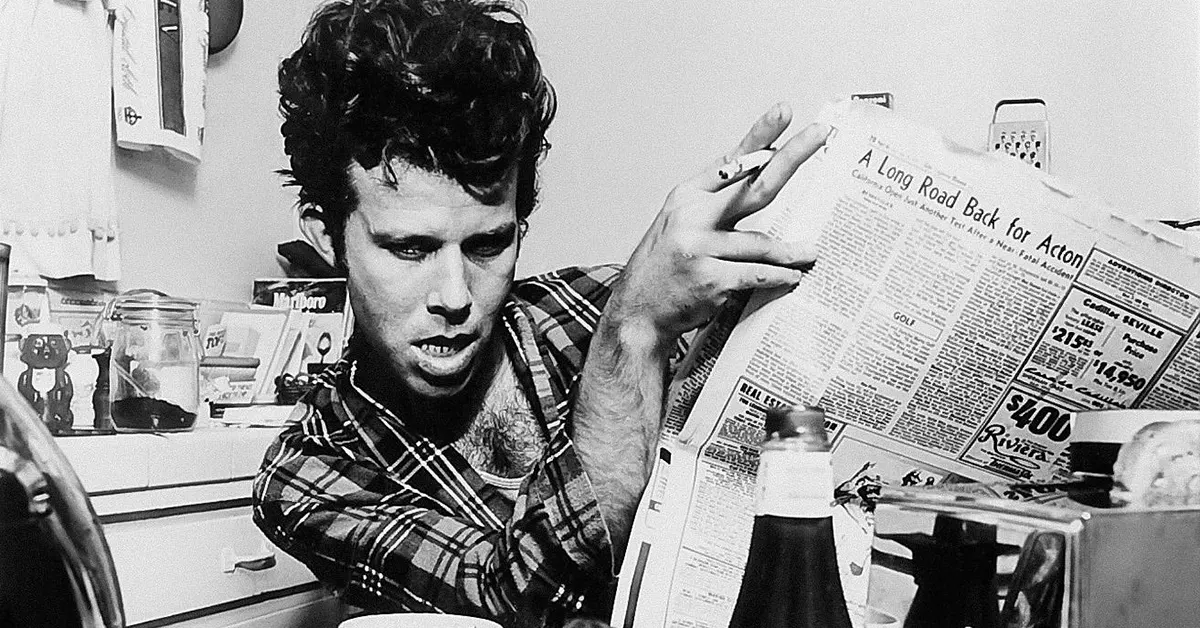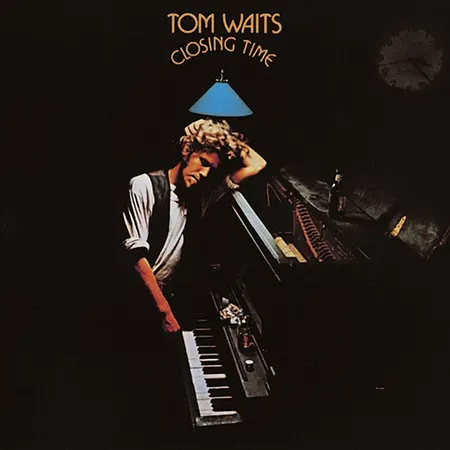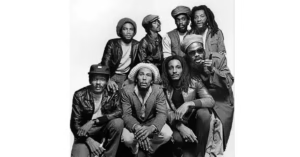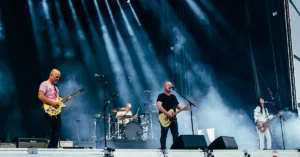Tom Waits: The Growling Bard of the American Underbelly
Tom Waits. Early Life and Influences
Born: December 7, 1949 – Pomona, California, USA
Full name: Thomas Alan Waits
Tom Waits grew up in working-class Southern California, steeped in the music of Frank Sinatra, Howlin’ Wolf, Bob Dylan, and the Beat poets. He worked odd jobs, rode Greyhound buses, and eavesdropped in diners — all of which fueled his vivid lyrical imagination.
After a stint as a doorman at LA’s legendary Troubadour club, Waits landed a contract with Asylum Records in the early 1970s.
II. The Barfly Crooner Era (1973–1980)
In the 1970s, Waits cultivated a persona that was equal parts hobo, jazzman, and hard-luck poet, often performing with a cigarette in one hand and a bourbon in the other.
✦ Closing Time (1973)
- His debut album: soft, jazzy, melancholic
- Included the now-classic “Ol’ 55” (famously covered by the Eagles) and “Martha”
- Marked Waits as a young romantic with an old soul
✦ The Heart of Saturday Night (1974)
- A love letter to the American city at night
- Tracks like “(Looking for) The Heart of Saturday Night” and “Diamonds on My Windshield” evoked Kerouac and Sinatra
✦ Small Change (1976)
- Darker and more theatrical, featuring his first major cult hit: “Tom Traubert’s Blues (Waltzing Matilda)”
- Jazz orchestration and beat-style monologues
Waits recorded several more albums in this style, including Blue Valentine (1978) and Heartattack and Vine (1980), but by the early ’80s, he was ready to dismantle his image and reinvent himself completely.
III. Avant-Garde Reinvention: Swordfishtrombones to Bone Machine (1983–1993)
This period saw Waits abandon jazz-lounge romanticism for percussive, experimental, and surrealist music — a transformation that stunned critics and inspired a new generation of artists.
✦ Swordfishtrombones (1983)
- A radical departure: junkyard percussion, distorted vocals, and carnival sounds
- Key tracks: “Underground,” “16 Shells from a Thirty-Ought Six,” “Johnsburg, Illinois”
- Produced by Waits himself — his artistic liberation
✦ Rain Dogs (1985)
- Widely considered his masterpiece
- Explores the lives of society’s misfits with empathy and humor
- Tracks like:
- “Singapore”
- “Clap Hands”
- “Jockey Full of Bourbon”
- “Downtown Train” (later covered by Rod Stewart)
✦ Franks Wild Years (1987)
- A “musical play” that expands on a fictional character from Swordfishtrombones
- Theatrical, surreal, and bold
✦ Bone Machine (1992)
- Dark, death-obsessed, and raw
- Won a Grammy for Best Alternative Music Album
- Songs like “I Don’t Wanna Grow Up” and “Dirt in the Ground” grapple with mortality
Tom Waits. Soundtracks, Acting, and Collaborations
Waits is also a respected actor and composer, appearing in films by:
- Jim Jarmusch (Down by Law, Coffee and Cigarettes)
- Francis Ford Coppola (Bram Stoker’s Dracula, Rumble Fish)
- Robert Altman, Terry Gilliam, and The Coen Brothers
He collaborated with his wife and creative partner Kathleen Brennan, co-writing nearly all of his post-1980s work.
He also composed music for stage productions, including The Black Rider with William S. Burroughs.
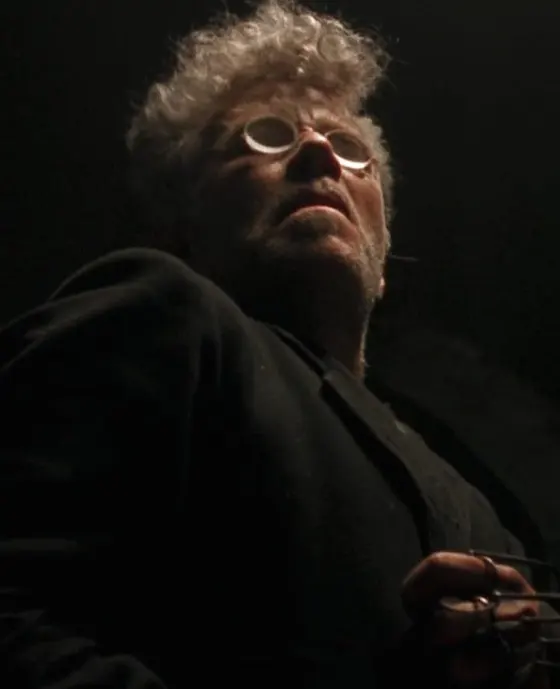
Source: IMDB
Tom Waits. Later Albums: Mule Variations to Bad As Me (1999–2011)
✦ Mule Variations (1999)
- A triumphant return to recording after a 6-year break
- Bluesy, weird, and intimate — won another Grammy
- Songs like:
- “Hold On” – Surprisingly tender
- “Get Behind the Mule” – Swampy and hypnotic
- “Picture in a Frame” – One of his most heartfelt love songs
✦ Alice and Blood Money (2002)
- Released simultaneously; based on stage plays
- Alice is dreamy and melancholic; Blood Money is harsh and bitter
✦ Real Gone (2004)
- No piano, distorted vocals, beatboxing (!)
- “Hoist That Rag,” “Trampled Rose,” “Sins of My Father”
✦ Bad As Me (2011)
- His most recent studio album (as of 2024)
- Concise and fiery, blending all eras of Waits
- Features: “Chicago,” “Back in the Crowd,” “Hell Broke Luce”
Tom Waits. Musical Style and Themes
Waits’ voice is as iconic as his lyrics — described as sounding like it was “soaked in bourbon and left out in the rain.”
His musical elements:
- Barrelhouse piano
- Junkyard percussion
- Blues, vaudeville, gospel, carnival, and industrial influences
- Non-traditional instruments: brake drums, marimbas, megaphones
Lyrical themes:
- Lost love, down-and-outers, drunks, saints, sinners, and ghosts
- Deep empathy for marginalized figures
- Irony, surrealism, humor, heartbreak
Tom Waits. Legacy and Influence
Tom Waits is considered one of America’s greatest songwriters, with a career that inspired:
- Bob Dylan, Bruce Springsteen, Nick Cave
- PJ Harvey, Fiona Apple, Norah Jones
- The Black Keys, Radiohead, and Queens of the Stone Age
Honors:
- Inducted into the Rock and Roll Hall of Fame (2011)
- Cited by Rolling Stone, NPR, and Mojo as one of the greatest artists of all time
Waits has always shunned fame, rarely tours, and fiercely guards his artistic independence.
Interesting Facts
- “Tom Waits for no man” is a popular pun — but he’s anything but impatient
- His music has been featured in dozens of films and TV shows
- Was once impersonated by a company for a car commercial — he sued and won
- Known for never giving the same interview twice; he’s a master of misdirection and mythmaking

